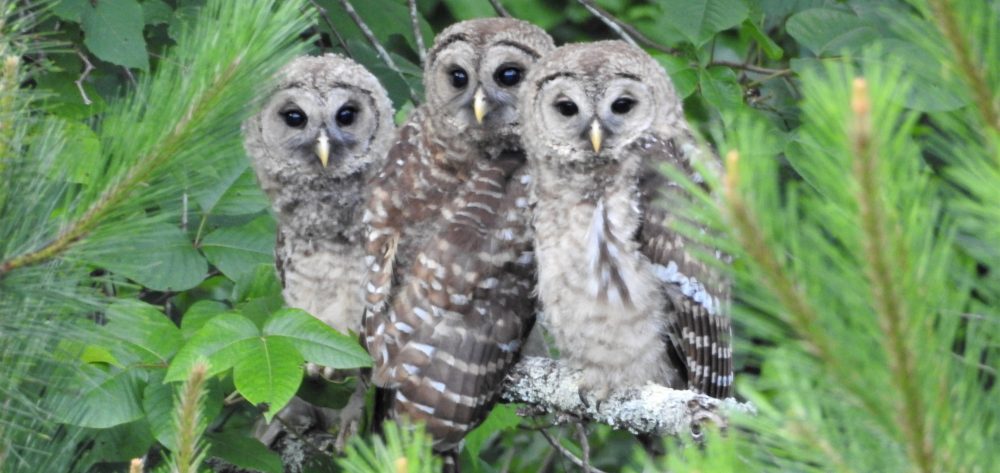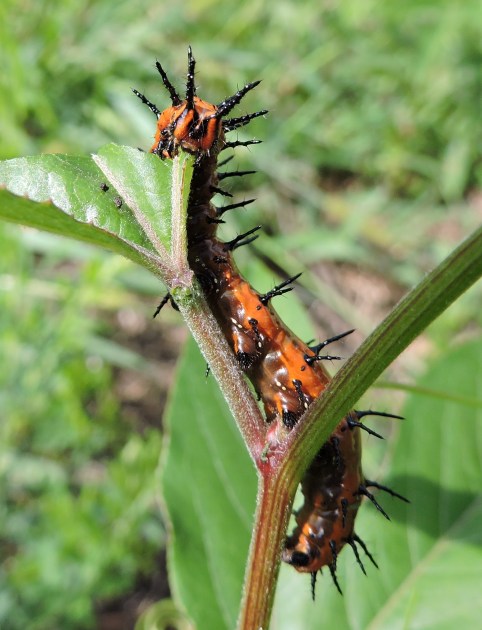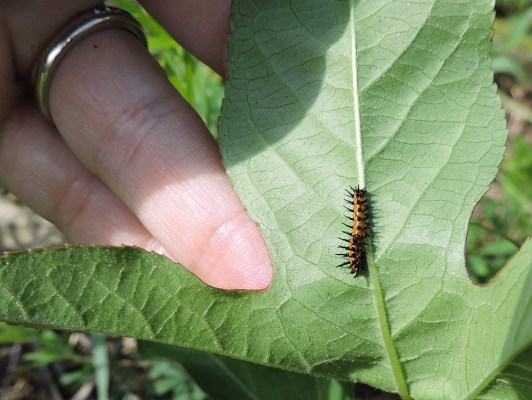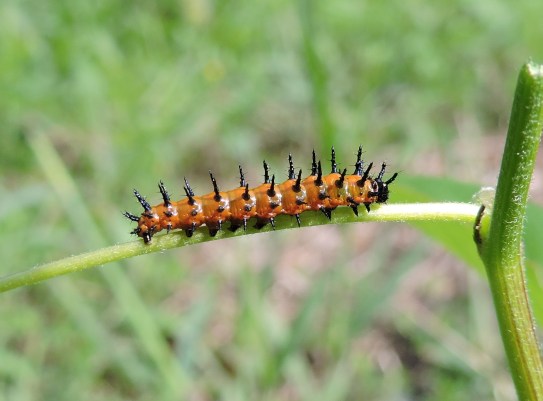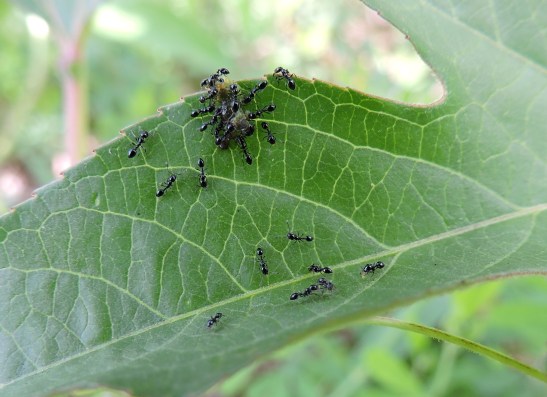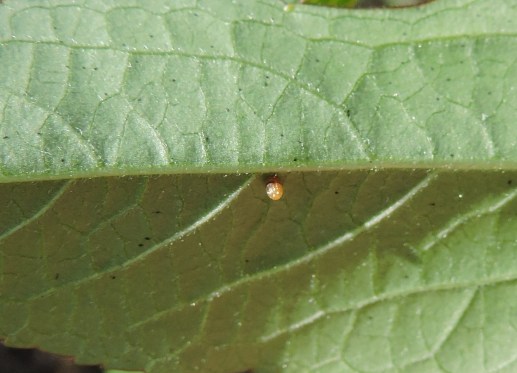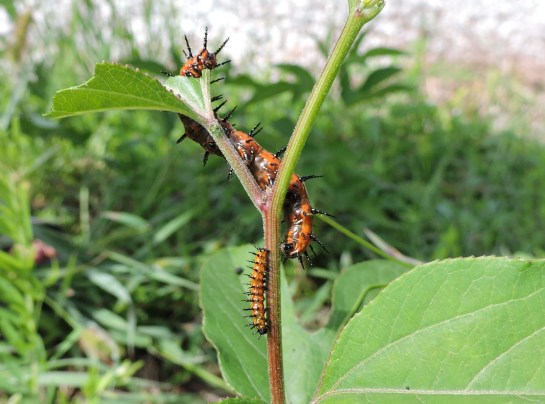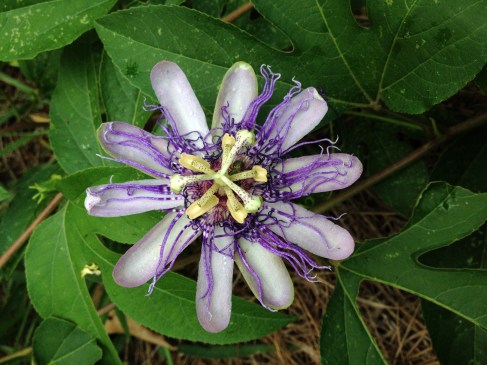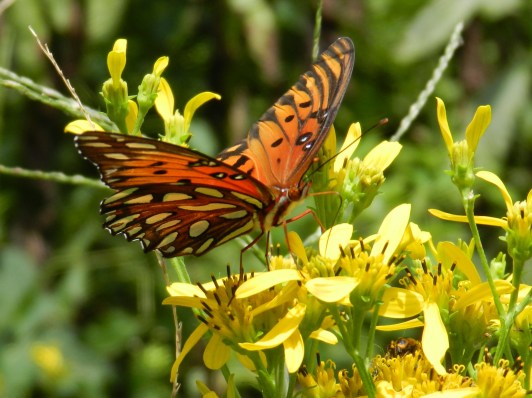One morning this weekend, beckoned by the butterflies in my backyard, I ventured out to see what I could find. I was immediately drawn to an area where dozens of gulf fritillaries were flitting about. While trying to get close enough to photograph one, I noticed a bright orange caterpillar on some emergent vegetation nearby. Since the butterflies weren’t cooperating, I parked myself next to the caterpillar to have a closer look.
Looking underneath a leaf, I discovered another orange caterpillar, this one much smaller than the first. Although the plant wasn’t blooming, I recogized it as passionflower, having just recently noticed some mature plants flowering in another part of the yard. When I checked the other emerging passionflower plants nearby, every one of them was host to some of the bright little caterpillars.
And perhaps one that didn’t make it…?
Closer inspection on the underside of the leaves revealed tiny eggs here and there.
It was pretty easy to guess that the eggs would become the little orange caterpillars, which must be the larvae of the fritillaries. Later, I confirmed my guess in my butterfly field guide. I also learned that the caterpillars’ black spines do not sting, but their bright orange and black coloration helps warn birds and other predators of their toxicity when eaten (although some specialized insects eat them and larger caterpillars will eat smaller ones). How cool to witness three stages of the butterfly life cycle–egg, larva, and butterfly–right there among that patch of passionflowers! I never did get a photo of the butterfly–I have included one I took last summer below–but making new discoveries in the backyard is always interesting and fun!
Since the chysalis of the gulf fritillary looks like a dry leaf, I’ll be keeping a closer eye on the dry leaves around the passionflower vines in the coming weeks!
Note: Passionflower (pictured below) is the sole host plant for the gulf fritillary as well as several other butterfly species. Many butterfly species are specialists in this way, underscoring the importance of using a variety of native plants in our landscaping.
